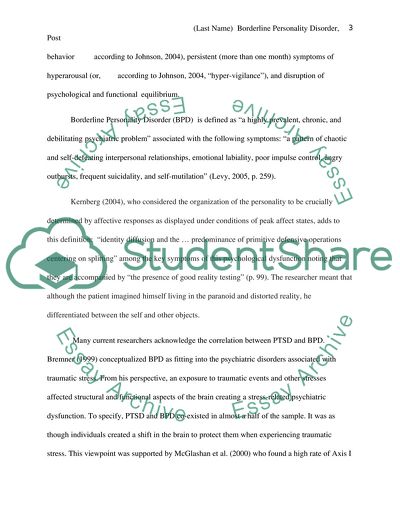Cite this document
(Borderline Personality Disorder Assignment Example | Topics and Well Written Essays - 3750 words, n.d.)
Borderline Personality Disorder Assignment Example | Topics and Well Written Essays - 3750 words. Retrieved from https://studentshare.org/health-sciences-medicine/1544592-axis-ii-disorders-borderline-personality-disorder-and-post-traumatic-stress-disorder
Borderline Personality Disorder Assignment Example | Topics and Well Written Essays - 3750 words. Retrieved from https://studentshare.org/health-sciences-medicine/1544592-axis-ii-disorders-borderline-personality-disorder-and-post-traumatic-stress-disorder
(Borderline Personality Disorder Assignment Example | Topics and Well Written Essays - 3750 Words)
Borderline Personality Disorder Assignment Example | Topics and Well Written Essays - 3750 Words. https://studentshare.org/health-sciences-medicine/1544592-axis-ii-disorders-borderline-personality-disorder-and-post-traumatic-stress-disorder.
Borderline Personality Disorder Assignment Example | Topics and Well Written Essays - 3750 Words. https://studentshare.org/health-sciences-medicine/1544592-axis-ii-disorders-borderline-personality-disorder-and-post-traumatic-stress-disorder.
“Borderline Personality Disorder Assignment Example | Topics and Well Written Essays - 3750 Words”, n.d. https://studentshare.org/health-sciences-medicine/1544592-axis-ii-disorders-borderline-personality-disorder-and-post-traumatic-stress-disorder.


